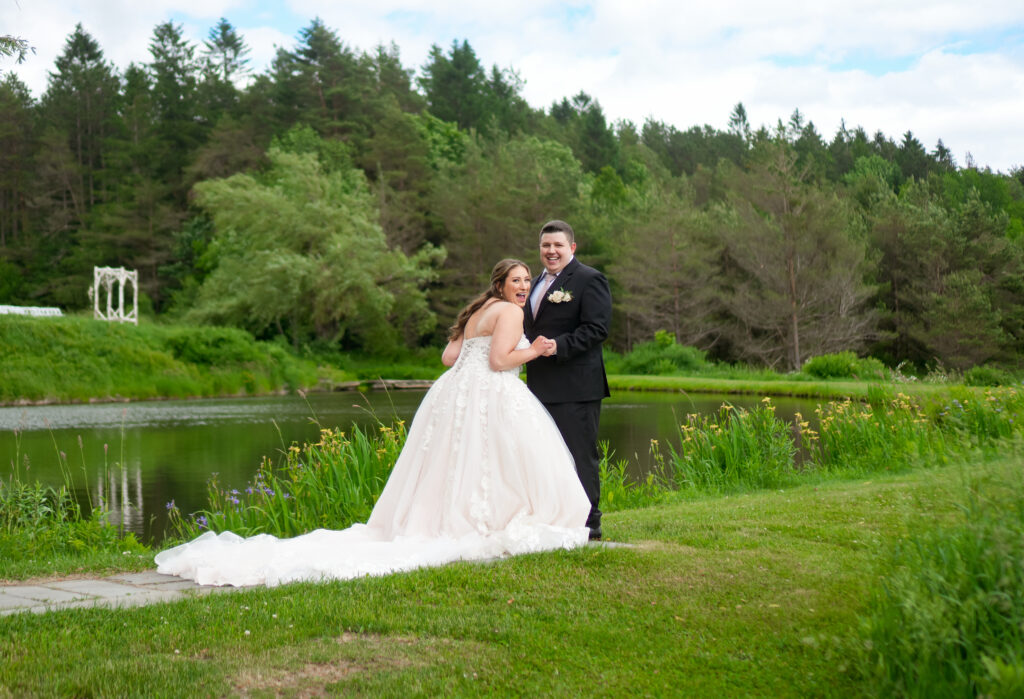Creating a seamless wedding timeline is one of the most crucial aspects of wedding planning. A well-structured timeline ensures that everything flows smoothly, vendors work in harmony, and—most importantly—the couple enjoys their big day without unnecessary stress.
As a professional wedding planner, mastering timeline creation not only makes your life easier but also solidifies your reputation as the go-to expert for stress-free weddings. In this guide, we’ll break down everything you need to know about building the perfect wedding day timeline, from essential time blocks to real-world problem-solving strategies.

Why a Wedding Timeline is Essential
A wedding without a timeline is like trying to bake a cake without a recipe—you might end up with something edible, but chances are it’ll be a chaotic mess. A well-thought-out timeline ensures:
The couple stays relaxed – They won’t have to worry about what’s next.
Vendors are on the same page – No miscommunications about setup or service times.
Guests have a great experience – No long gaps, awkward waiting periods, or rushed transitions.
The planner stays in control – You know exactly what’s happening and when, so you can manage any hiccups before they become disasters.
Now, let’s build that perfect timeline!
How to Structure a Wedding Timeline
1. Start with the Ceremony Time & Work Backwards
The ceremony time is the anchor of the entire wedding day. Once you have that locked in, you can start building the schedule in reverse, ensuring that everything leads up to the big moment smoothly.
2. Consider Venue-Specific Restrictions
Some venues have strict rules about when vendors can arrive, how long you have for setup, and when the event must conclude. Always factor these into your timeline.
3. Break Down the Day into Key Sections
A typical wedding day timeline includes the following key sections:
Morning: Pre-Ceremony Prep
8:00 AM – Hair & Makeup Begins (Start earlier for large bridal parties)
9:30 AM – Vendors Arrive for Setup (Florists, rental companies, decorators)
11:00 AM – Photographer & Videographer Arrive (To capture getting-ready moments)
12:30 PM – Wedding Party Gets Dressed
1:00 PM – First Look (If the couple is doing one)
1:30 PM – Final Touch-Ups & Photos Begin
Afternoon: The Ceremony
2:00 PM – Guests Begin Arriving
2:30 PM – Ceremony Start Time
3:00 PM – Ceremony Ends & Cocktail Hour Begins
3:15 PM – Family & Wedding Party Photos
3:45 PM – Couple’s Portraits
Evening: The Reception
4:30 PM – Guests Seated for Dinner
4:45 PM – Grand Entrance & First Dance
5:00 PM – Dinner Service Begins
6:30 PM – Speeches & Toasts
7:00 PM – Cake Cutting & Dessert
7:30 PM – Open Dance Floor & Party Time
9:30 PM – Late-Night Snacks (Optional)
10:30 PM – Grand Exit

Common Timeline Challenges & How to Solve Them
1. Hair & Makeup Delays
Problem: The bridal party is running behind on hair and makeup.
Solution: Schedule hair and makeup earlier than you think necessary and have a buffer for last-minute touch-ups. Work with the Beauty Team vendor to really customize the time estimates.
2. Guests Arriving Late to the Ceremony
Problem: Some guests inevitably show up late, disrupting the ceremony.
Solution: Give guests an additional 5 minutes to sit down before the actual start time. It’s best to adjust this in your personal timeline of the day, providing a little buffer just in case.
3. Too Much or Too Little Time for Photos
Problem: Rushing through photos or keeping guests waiting too long.
Solution: Work with the photographer to pre-plan a shot list and schedule the right amount of time for each set of photos. It’s a good idea to give little reminders to the clients, family, guests, and Photographer about staying on time throughout the day.
4. Vendor Coordination Issues
Problem: A vendor arrives late or isn’t ready at the right time.
Solution: Send a detailed timeline to all vendors a week before the wedding and confirm arrival times the day before.
5. Overlapping Events Causing Chaos
Problem: Catering is setting up while speeches are happening, or the DJ is testing sound during dinner. Solution: Space out key moments and have a run-of-show meeting with vendors to clarify timing.
Tips for Keeping Everyone on Schedule
Build in Buffers: Add at least 15-30 minutes of cushion between key events to accommodate delays.
Use an Assistant: If possible, delegate timeline management to an assistant day-of coordinator.
Communicate Clearly: Give a copy of the timeline to the couple, vendors, and bridal party.
Set Up Alerts: Use quiet phone reminders or alarms for critical moments (e.g., “line up for grand entrance”).
Stay Flexible: Things will shift—be ready to adjust and problem-solve on the fly.
Final Thoughts: A Wedding Timeline is Your Best Friend
A solid wedding timeline is what separates a smooth, stress-free event from a chaotic disaster. As a planner, you are the glue that holds everything together. When you master the art of timeline creation, you’ll not only impress your clients and vendors but also make your own job so much easier.
Looking for more professional wedding planning tips? Join us at FindYourWeddingPlanner.com for expert resources, networking opportunities, and tools to help you grow your business!
Happy Planning!